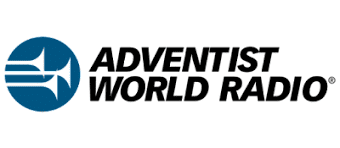On this occasion we pick up again the story of radio broadcasting from ships, and this time during the postwar era in the Americas. During this period of time it is known that at least seven ships were involved in some form of radio broadcasting.
Back in the year 1961, the military fiasco known as the “Bay of Pigs” occurred, in which there was an aborted invasion on the southern coast of the island of Cuba. During this event, two American boats, operated by the CIA, were used for broadcasting radio information into this island country.
One unnamed boat, loaded with a mediumwave transmitter, was stationed off the coast of Cuba near the capital city Havana where it went on the air in the Spanish language. Another unnamed boat, a yacht, was loaded with a shortwave transmitter, and it went on the air three times each day in Spanish as “Radio Independiente”.
Some 24 years later there was another insurgency movement in Latin America, this time in Central America. In support of this new insurgency movement in El Salvador, Radio Vinceremos was launched in 1981.
Radio Venceremos was located “somewhere in Central America,” and its shortwave transmitters propagated a strong signal that was heard quite regularly in the United States, Europe and the South Pacific. Radio Venceremos issued large and colorful QSL cards for its many shortwave transmissions.
In an endeavor to counter the broadcasts from Radio Venceremos, the United States stationed two navy ships in the Caribbean off the coast of Central America. These two navy vessels were Spruance class destroyers, and they were located in the Gulf of Fonseca.
Programming from the shortwave communication transmitters on these two vessels, first the “Caron” and later the “Diego,” consisted entirely of jamming noises. The signal from these two ships was also heard widely throughout North America and into Europe and the South Pacific. It could be conjectured that no QSLs were ever issued for these jamming broadcasts.
We move our geography now a little north, to the Atlantic coast of the United States. On July 5, 1953, radio stations WXUR AM and FM, located in Media, Pennsylvania, were closed by order of the FCC. The owner, Reverend Carl McIntire, then installed an old 10 kw RCA transmitter on board the ship “Columbus“. The antenna was a simple inverted V.
Two months later, McIntire went on the air at half power as “Radio Free America,” choosing several different mediumwave channels, though mostly above the top end of the mediumwave band. At the end of 11 days of spasmodic testing, the station was closed forever. One QSL letter is known, prepared by Larry Magne on behalf of “Radio Free America”.
In the year 1988 the ship “Sarah” was anchored in international waters off Long Island New York for the purpose of broadcasting as “Radio New York International”. This ship was stated to contain four transmitters: mediumwave, longwave and FM. This ship apparently went on the air for a short period of time. Subsequently, however, broadcasts from the “Sarah” were heard on relay over shortwave WWCR in Nashville, Tennessee, for which QSL cards were issued.
The next American endeavor at ship broadcasting is due to go on air quite soon. Alan Weiner of shortwave station WBCQ in Monticello, Maine is fitting out the ship “Katie” with broadcast transmitters for the purpose of going on air legitimately from several different exotic locations. It is anticipated that the “Katie” will go on the air from its first location, perhaps Belize, within the next month or two.
From: Wavescan 351, September 16, 2001
 “Wavescan” is a weekly program for long distance radio hobbyists produced by Dr. Adrian M. Peterson, Coordinator of International Relations for Adventist World Radio. AWR carries the program over many of its stations (including shortwave).
“Wavescan” is a weekly program for long distance radio hobbyists produced by Dr. Adrian M. Peterson, Coordinator of International Relations for Adventist World Radio. AWR carries the program over many of its stations (including shortwave). 